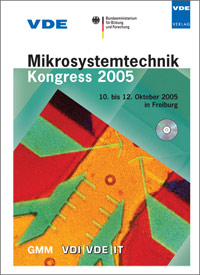Analysis of microelectrode-signals in the peripheral nervous system, in-vivo and post-processing
Konferenz: Mikrosystemtechnik Kongress 2005 - Mikrosystemtechnik Kongress 2005
10.10.2005 - 12.10.2005 in Munich, Germany
Tagungsband: Mikrosystemtechnik Kongress 2005
Seiten: 4Sprache: EnglischTyp: PDF
Persönliche VDE-Mitglieder erhalten auf diesen Artikel 10% Rabatt
Autoren:
Krueger, T. B.; Stieglitz, T. (Laboratory for Biomedical Microsystems, Institute for Microsystem Technology (IMTEK), University of Freiburg, Freiburg, Germany)
Reischl, M.; Burmeister, O.; Mikut, R. (Forschungszentrum Karlsruhe, Institute for Applied Computer Science (IAI), Karlsruhe, Germany)
Lago, N.; Navarro, X. (Department of Cell Biology, Physiology and Immunology, and Institute of Neurosciences, Universitat, Autònoma de Barcelona (UAB), Bellaterra, Spain)
Ruff, R.; Hoffmann, K.-P. (Department of Medical Engineering and Neural Prostheses, Fraunhofer Institute for Biomedical Engineering, (IBMT), St. Ingbert, Germany)
Inhalt:
Microelectrodes measuring neurosignals may establish a link between the technical and the biological world with a better resolution than common neuroprostheses. The practical use of an implantable microsystem is conditioned by the quality of the biological neurosignals, giving the possibility to understand the mode of operation of human-machine-interfaces. Thus, microsystems can be used as a replacement or enhancement of the physiological system. In this paper, we present our developed microelectrodes, which were successfully used in the peripheral nervous system of the Sprague-Dawley rat to acquire nerve signals. To gather information about the neurophysiologic system (effects of electrode placement, signal magnitude and selectivity etc.) an in vivo experiment setup for the analysis of nerve signals was made. At the site of the sciatic nerve in the rat the neurosignals - containing efferent and afferent signals - were recorded with the self developed electrodes. The collected data was revised in postprocessing offline routines for a higher degree of refinement than possible in online processing, resulting in a first successful discrimination of different afferent signals. Such a method and setup can improve the development of later fully implantable neuroprosthetic microsystems.


